

Back in the September of 2016, I found out about Aliexpress.
For those who are not familiar, it was basically the non-American 2016 counterpart of Wish or Shein.
And I was obsessed.
I didn't order much, maybe a couple of phone cases and a t-shirt, but I remember a lot of my friends ordering more than that and my aunt ordering a LED-lit toilet lid.
For the record, I am no longer a cheap-shopping obsessed early adult and I do condemn fast fashion and cheap labor. But let me tell you, back then, I would scroll through Aliexpress all day.

And I always wondered how everything was so cheap.
Now I know.
What I didn't know, though, was how the sellers' perspective looked. And my new obsession being onboarding UX, I needed to know.
So today, join me as I discover:
- What seller onboarding is,
- Why it is important to onboard sellers properly,
- Some of the best seller onboarding examples, and
- How YOU can create a streamlined onboarding process for your marketplace sellers
Let's start with a definition:
What Is Seller Onboarding?
Seller onboarding, often also referred to as merchant onboarding, is a form of onboarding specifically performed to onboard macro to micro businesses to third-party platforms. Ecommerce and digital sales platforms like Amazon, Shopify, and eBay are among these third-party platforms that require an onboarding stage and other seller onboarding elements like onboarding checklists to make sure new sellers understand and perform digital payment, seller protection, and business requirements successfully.
To understand the concept better, we might need to define the term "seller" better and differentiate it from other terms under the same umbrella.
While the seller is often mixed up with different terms, such as merchant, vendor, supplier, and others, it actually refers to anyone selling anything.
But if we were to draw a line between these four terms in the supply chain, it would be as such:
In the clothing industry, a supplier can be the farmers supplying manufacturers with cotton; a vendor is then the one buying the finished products from the manufacturers to sell to some other company or directly to the customer. A merchant is generally similar to a vendor but is used more often to refer to shopkeepers or more customer-facing roles.
If someone who has bought a piece of clothing from a merchant sells it again, not necessarily to profit or in bulk, then they are a casual seller.
But all in all, every one of these persons we just discussed is a seller in one way or another.
In the context of e-commerce, however, the term seller (or merchant on different platforms) refers to business owners, be it small or large, looking to sell their physical or digital goods online, with the advantages of using their preferred payment methods such as contactless payment and online sales channel opportunities like those of Amazon sellers and merchants.

And a streamlined onboarding process for sellers is necessary to ensure they are aware of all the opportunities marketplace platforms can offer them.
Let's take a closer look at why seller onboarding is necessary:
Why is it so crucial to onboard sellers the right way
Online marketplace sellers are everywhere.
There are more than 9.5 million eCommerce sites in the US alone, with more and more being created every single day.
When the market is so rapidly growing, not all eCommerce sites can keep up and employ a good seller onboarding.
But here are three reasons why they should:
1- eCommerce entails complex processes
From digital payment methods to business parameters and to business improvement initiatives, sellers on eCommerce platforms and digital marketplaces need to understand many complex processes.
With a seller onboarding process that captures the most important details of the merchant center and offers effective communication guidelines, it is possible to make it way less complex.
2- Poor or no seller onboarding might mean seller failure
90% of eCommerce startups will fail within 120 days of operation.
Now, these failures are almost always because of poor marketing, but in a way, this means that sellers don't necessarily know what they have to do to reach success.
And a lack of good onboarding might be a cause of confusion and eventually failure for e-commerce sellers.
Since these sellers are essentially your customers paying to make use of a third-party platform to sell their goods, you can't risk losing their business in the name of confusion.
That's just tragic.
So, it is important to offer a top-notch seller onboarding experience to make sure they also know how to offer a good customer experience.
3- Seller onboarding can be used to encourage to do more
Seller onboarding isn't just about teaching sellers on your marketplace how to do what.
With different user onboarding UX patterns, seller onboarding can be used to promote different capabilities of your eCommerce solution.
Here's how Shopify does it:
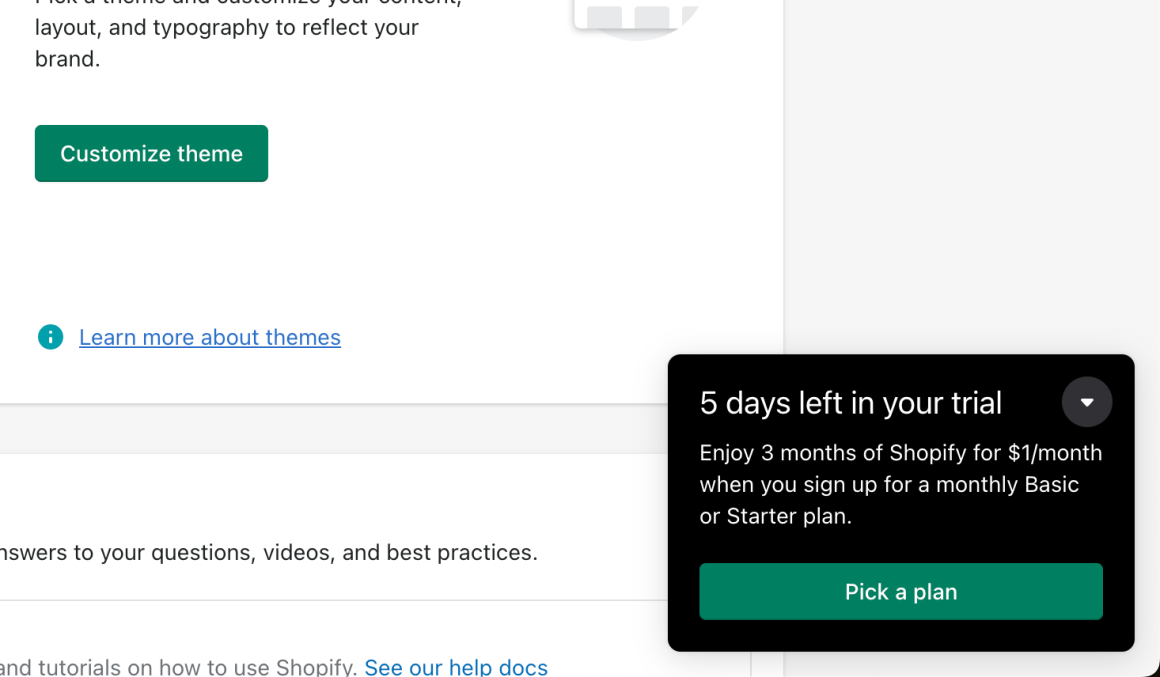
The slideout modal is small enough not to disrupt the onboarding experience but big enough to remind users to pick a plan.
While we are at it, let's take a closer look at some good examples of seller onboarding.
3 Best Seller Onboarding Examples
As I said above, there are hundreds of thousands of fully-fledged marketplace platforms out there, and more are being started each day.
But to see the norm of seller onboarding, we need to be looking at the top of the marketplace market.
Here are three examples:
1- Shopify
Shopify is one of the best eCommerce websites, if not the very best, and naturally, their seller onboarding process is carefully designed.
The Shopify seller signup process looks a little likes this:
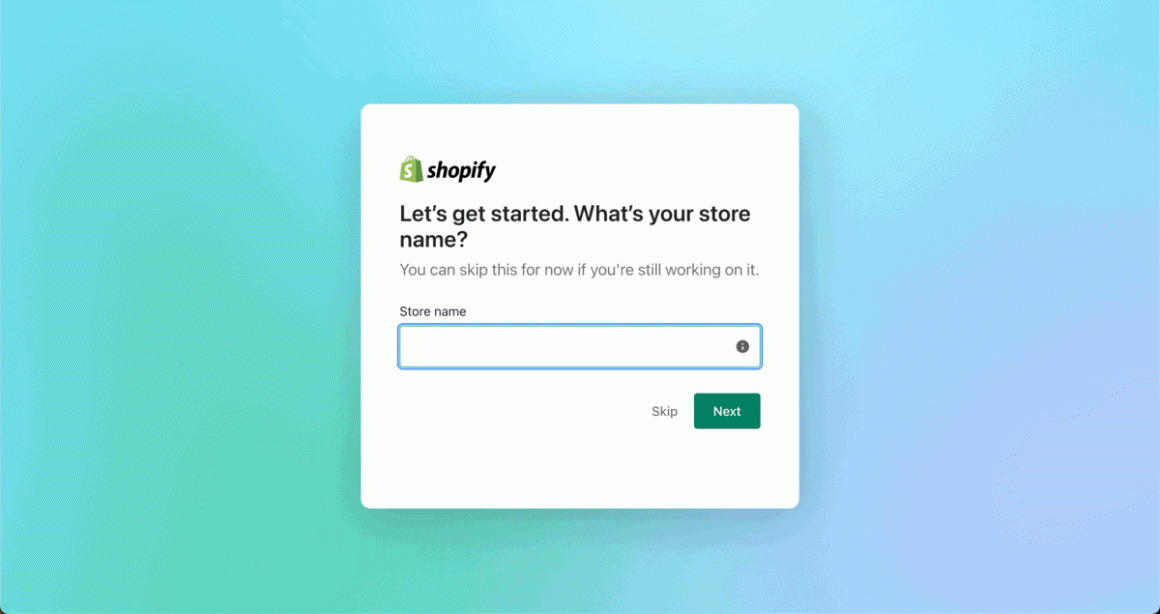
The existence of a progress bar, there being very short and basic steps, and the visual support with small icons at each step make the signup very fun to interact with.
When the signup is done, sellers are prompted with a 4-step onboarding checklist. The detailed process steps are then shown on the right-hand side of the screen when the button for a specific task is clicked:
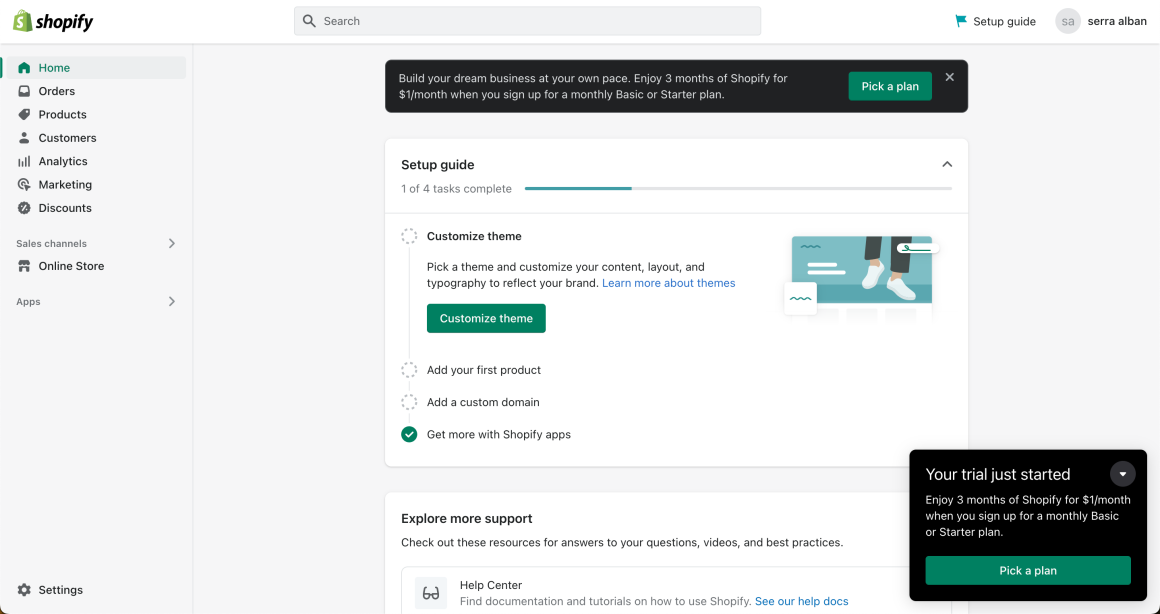
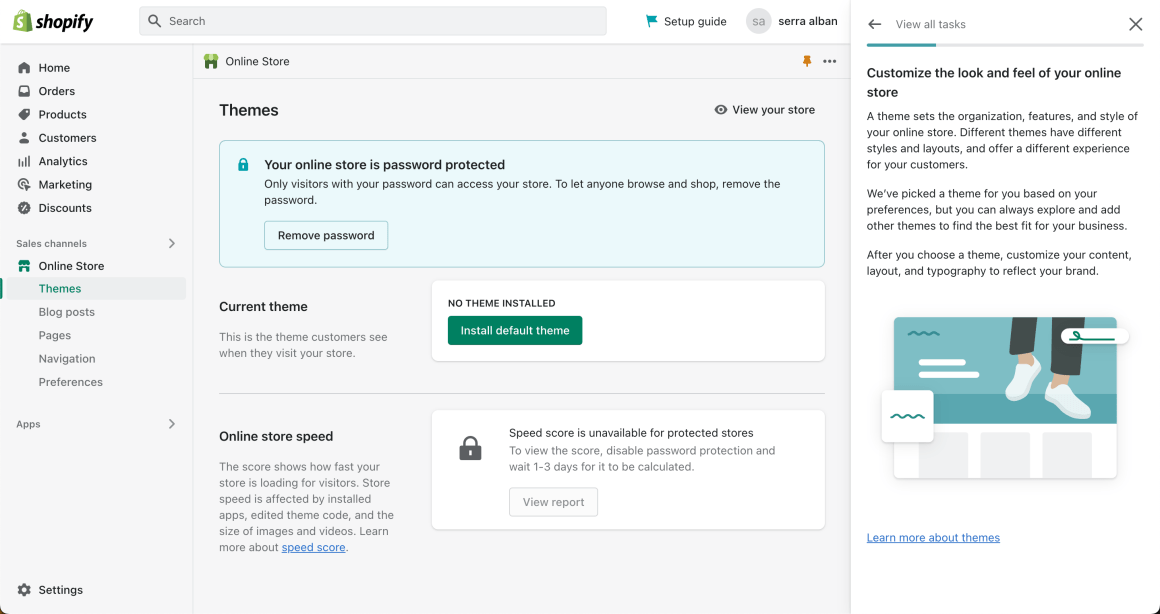
As we mentioned above, the onboarding UX being used to promote the paid plans inside the UI is also a genius move on the part of Shopify.
2- Etsy
Etsy's onboarding process is quite elegant and user-friendly, just like the platform itself.
The first part of the sign-up flow works to segment users properly and to make them feel welcome on the platform with fun visuals on one side of the screen and clean copy on the other side of the screen:

Once the first stage of sign-up is done, Etsy prompts users with another 6-step process that walks users through coming up with a business name, setting up a digital payment or alternative payment methods, and creating settings for shop security.
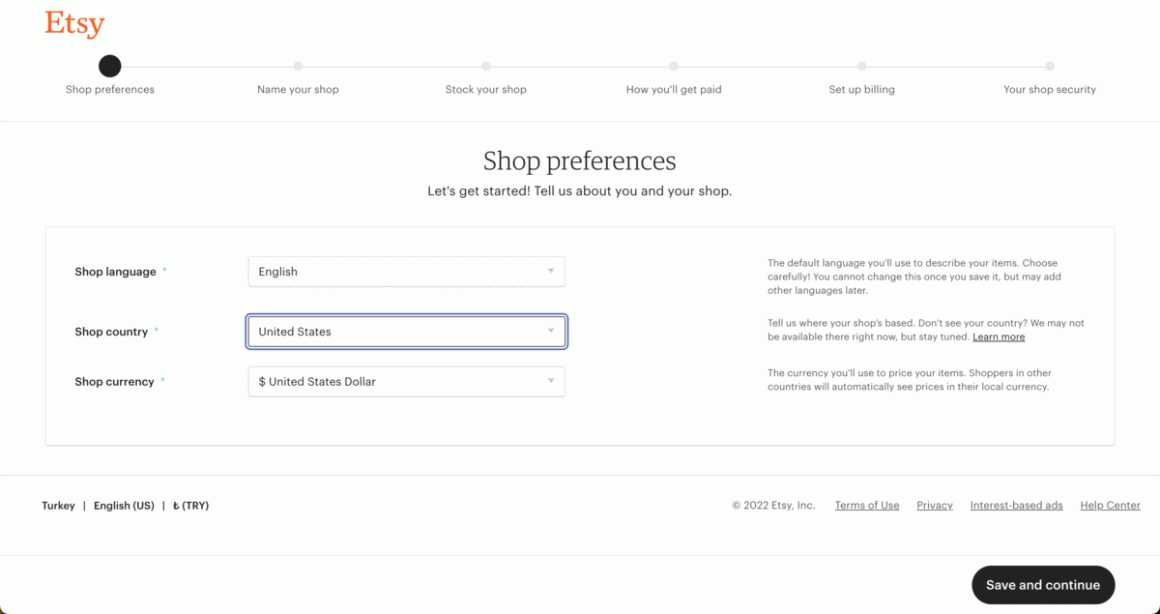
Though I couldn't make it to the inside of the seller UI (got nothing to sell, sadly), Etsy's onboarding seems clean, informative, and welcoming.
Moreover, Etsy also does a splendid job onboarding users via email:

3- eBay
Unlike other eCommerce businesses solutions, eBay makes use of different onboarding UX patterns like tooltips and modals starting from the signup process:
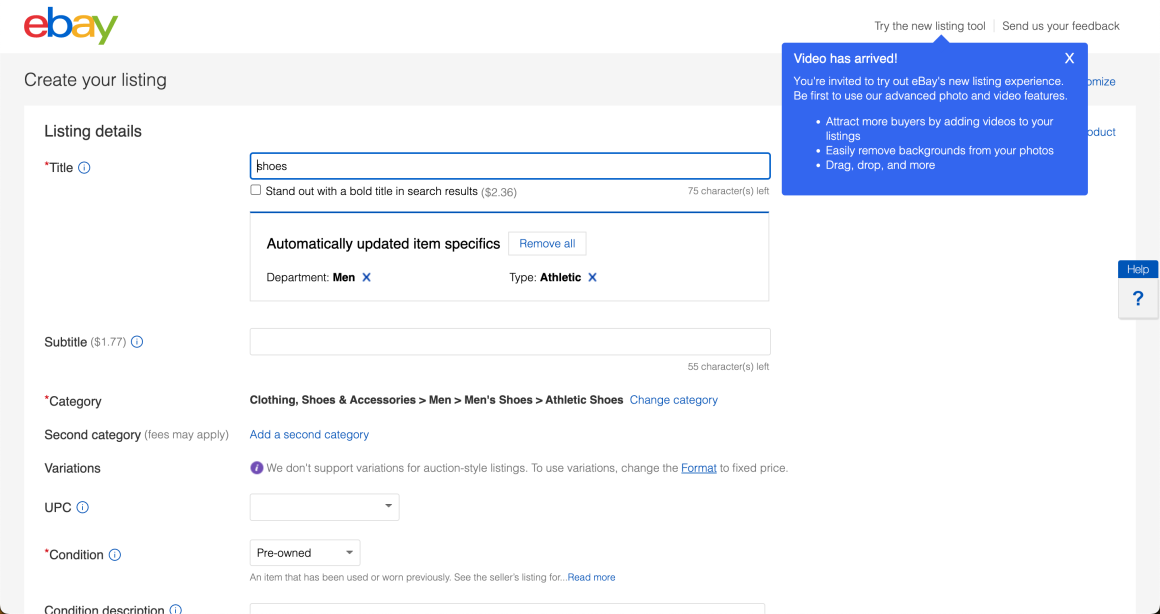
There is not only use of modal but also it is directly dedicated to onboarding users to a new experience within the UI:
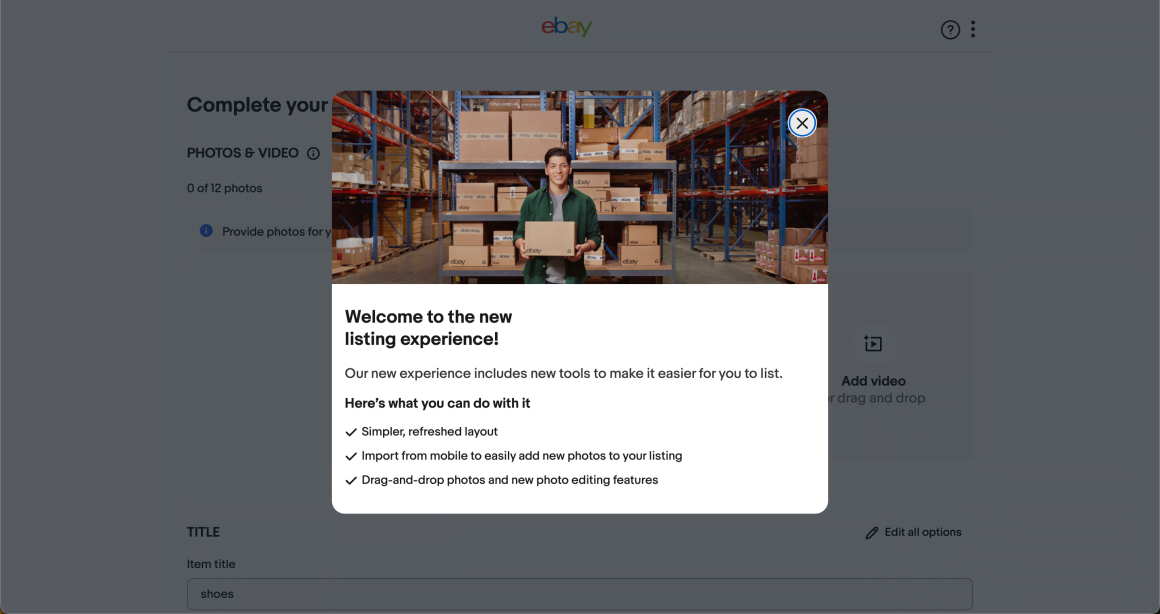
The eBay onboarding is thus way more specific in its seller onboarding and takes more time to directly address its onboarding and UX.
But how can YOU onboard your sellers to YOUR marketplace platform?
Let's take a look at some best practices.
5 Steps to Create a Great Onboarding Process for Your Marketplace
Much like any other onboarding case, it isn't an easy job to find out the specific needs of your customers and users and work accordingly.
But it is essential to do so in seller onboarding, precisely for the reasons we've touched upon above.
Here are 5 seller onboarding best practices to make your seller onboarding a success:
1- Know your sellers
Any onboarding, even any business process, start with one simple step: knowing your users to the core.
In our case, we are dealing with sellers and depending on the marketplace and platform at hand, these seller personas can vary widely.
Still, figuring out the demographics of how old your sellers are, where they are from, and what they are selling plays a crucial role in successfully onboarding them.
2- Use the right software
While there are many options and add-ons for the type of payment you would like to use, there aren't quite as many onboarding tools to use in your seller onboarding.
But I just might happen to know a really good one 👀
Smoothest onboarding tool for the smoothest seller onboarding: UserGuiding 🚀
I spent an entire 2 days researching for this article.
And the number one finding I ended up with was just how many different legal and financial processes there were to become an online seller.

From the perspective of the marketplace platforms AND that of the sellers, there are much to consider, from the array of payment possibilities to business partners, the checkout experience, and to approval policies.
So, the seller onboarding process might be a shout in the void for the sellers and confuse them even more if it is not a matter of importance for the platforms to begin with.
UserGuiding to the rescue!
UserGuiding is a no-code onboarding solution that is both easy to use and affordable for any size of business.
Among UserGuiding's most prominent features are:
✅ Interactive guides, product tours, and walkthroughs,
✅ User onboarding checklists and in-app messages,
✅ Hotspots and tooltips,
✅ Resource centers, and
All powered with powerful analytics, user segmentation and targeting, and customization.
👉 Try UserGuiding for FREE 👈
3- Conduct A/B testing
A/B testing is an irreplaceable step in any business process that cares about what its users think.
And take it from me, you should be caring about what your users think about you.
A/B testing for a marketplace platform is not necessarily the hard kind, as most eCommerce platforms see a flood of both buyers and sellers every day, but if your platform isn't there yet, guerilla testing and testing within your company is also an option.
4- Offer self-service and customer service
Another characteristic of eCommerce platforms is the fact that customer service isn't always available.
For example, Alibaba offers its newly registered sellers, without a plan, the chance to talk to a consultant one time. This becomes a more regular service for paying customers, of course.
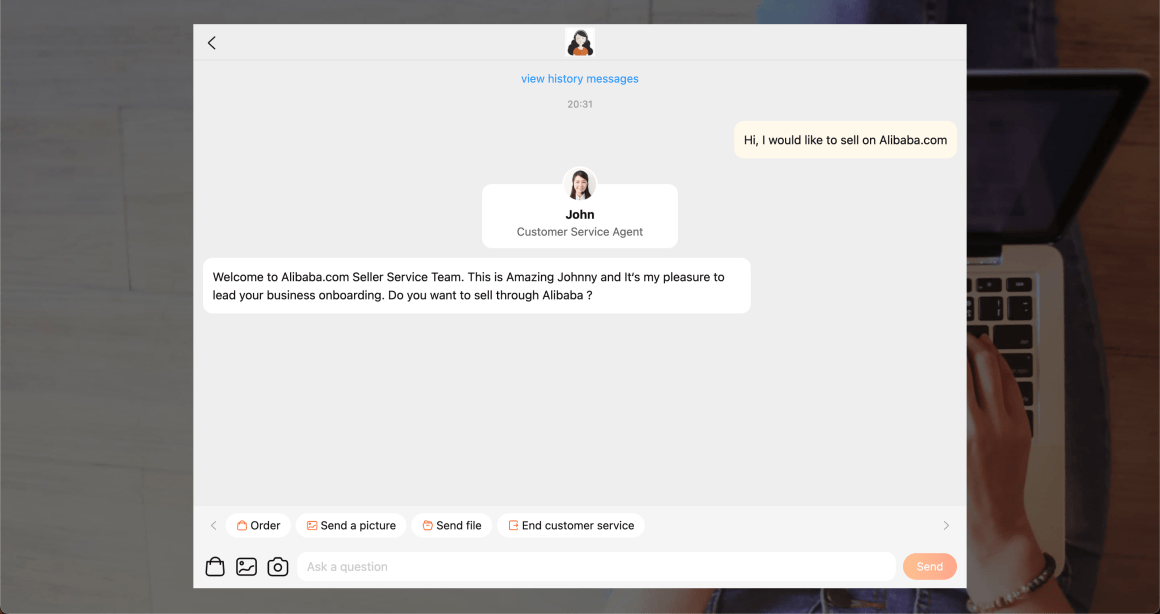
Still, even if you cannot offer 24/7 customer service for free, it is best to offer an onboarding manual or self-service help center to make sure your sellers don't end up getting confused and leave the platform.
A resource center inside the UI might be a great solution (and I know exactly where you can find one like the one right here 👉)
5- Optimize and iterate
Lastly, the most important step of all is to repeat.
The definition of user onboarding makes it clear that onboarding is, in fact, a never-ending process - that is, if your product still gets updates.
So, the least you can do to keep your seller onboarding up to par is to check metrics like user activation, conversion, and retention rates, check for interface errors, look for ways to optimize onboarding copy and ask your sellers for feedback.
To Wrap Up...
Seller onboarding is hardly a tough job if you know the software to use and care enough about keeping it in its best form.
Hopefully, this article has given you the best tips, tricks and examples of creating a successful seller onboarding process.
Best of luck!
Frequently Asked Questions
What is seller onboarding?
Seller onboarding is an onboarding process dedicated to the onboarding of eCommerce platform sellers and merchants. Amazon, eBay, Shopify, and Etsy are among the marketplace platforms that best onboard sellers.
What is flipkart onboarding?
Flipkart is an Indian marketplace for sellers to sell their goods easily online and has a relatively effective seller onboarding process.
What is ecommerce onboarding?
Ecommerce onboarding is an onboarding process for ecommerce platforms, both for sellers and buyers.

















.svg)
.svg)
.svg)
.svg)
.svg)

.svg)
.svg)












.svg)
.svg)




.png)
















